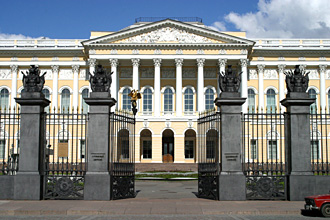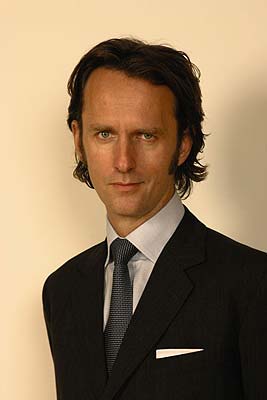Time Warner Cable has delivered a blow to Ovation, the independent arts television channel.Â
 That’s sad, even though Ovation has never lived up to the expections many had for it in the early ’90s, when J. Carter Brown, the esteemed former director of the National Gallery of Art, agreed to become chairman of the fledgling network. As the New York Times told the story:
That’s sad, even though Ovation has never lived up to the expections many had for it in the early ’90s, when J. Carter Brown, the esteemed former director of the National Gallery of Art, agreed to become chairman of the fledgling network. As the New York Times told the story:
“I will be Ovation’s godfather,” said Mr. Brown. “My role will be one of making connections and looking at the quality of the programming.” Dr. Harold E. Morse, founder of the Learning Channel, will be in charge of the day-to-day operations as Ovation’s president and chief executive. The network is based in Alexandria, Va.
The Ovation network will limit itself to art, dance, music, literature and theater. Unlike existing arts networks like Bravo and Arts and Entertainment, it will not show movies.
The debut was set for 1994, but that did not happen until 1996, by which time I had written an article headline, TV Has All But Tuned Out the Visual Arts, and Ovation was not carried by the cable companies in New York City. Somewhere along the way, the channel changed hands, and in 2010, the Los Angeles Times reported that
“…for the last four years a group of investors has been working to establish an oasis for Ovation, an independent channel devoted to art and contemporary culture….Available in only 5 million homes in 2007, the channel now can be seen in about 42 million homes, or nearly half of all cable and satellite households in the country.”
Now, the LA Times is reporting that “Time Warner Cable plans to drop the small Santa Monica-based channel Ovation from its programming lineup at year’s end.” The company issued a statement saying, in part:
Ovation is among the poorest performing networks, and is viewed by less than 1% of our customers on any given day.
That is true even though Ovation has long since expanded the definition of arts to include art-house films, photography, architecture and other “popular” arts. In 2010, the LAT piece quoted experts suggesting that the “long-tail theory” said a small niche channel could do well because a small base of avid fans would keep it going. I always thought the long-tail theory was overblown, and it clearly didn’t work here.
Still, Ovation does continue on other distribution outlets. Time-Warner’s move knocks it out of 7 million homes in one swoop, but about 44 million homes can still watch under service agreements with DirecTV and Comcast Corp, for example.
Ovation has started an online petition to Time-Warner Cable.



